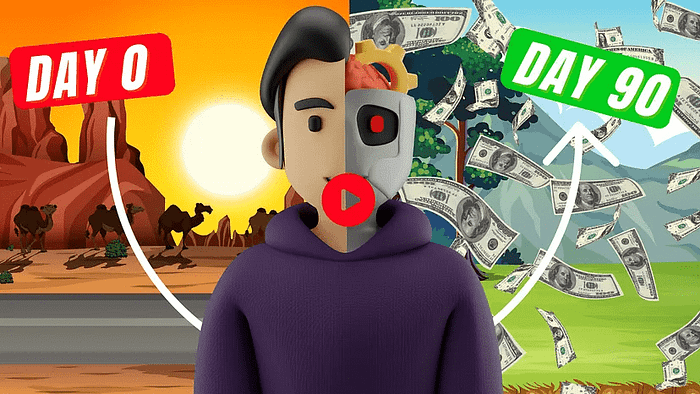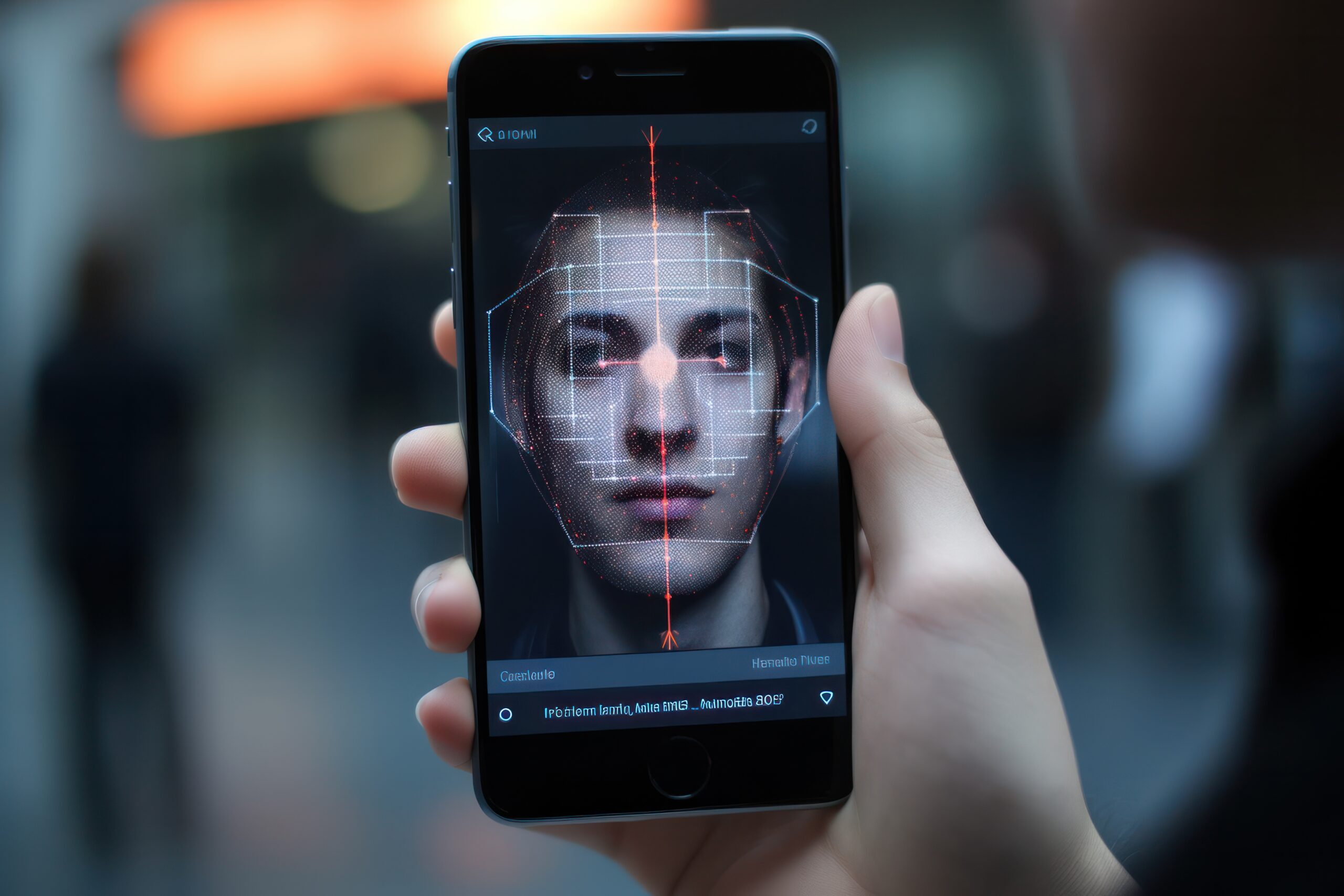Deepfake technology has taken the world by storm, enabling users to create incredibly realistic videos by superimposing one person’s face onto another’s body. While this technology has raised concerns about its potential misuse, it has also opened up a world of creative possibilities for content creators, filmmakers, and enthusiasts alike. In this comprehensive guide, we will walk you through the process of creating stunning deepfake videos, even if you’re a complete beginner. Get ready to dive into the fascinating world of deepfakes and learn how to create your own mind-bending videos!
We strongly recommend that you check out our guide on how to take advantage of AI in today’s passive income economy.
Table of Contents
Key Features
- Realistic face swapping: Deepfake technology allows you to seamlessly replace one person’s face with another’s, creating incredibly lifelike results.
- Lip-sync accuracy: Advanced algorithms ensure that the generated face matches the original audio, making the deepfake video appear even more convincing.
- Customizable settings: Most deepfake software offers a range of adjustable parameters, enabling you to fine-tune the output to achieve the desired look and feel.
- Multiple input formats: Deepfake tools often support various input formats, including images, videos, and even live camera feeds, giving you flexibility in your projects.
- GPU acceleration: Many deepfake applications leverage the power of your computer’s graphics card to speed up the processing time, making the creation process more efficient.
- Open-source options: Several deepfake tools are available as open-source projects, allowing developers to contribute to and customize the software to suit their needs.
- Cross-platform compatibility: Deepfake software is available for different operating systems, including Windows, macOS, and Linux, ensuring accessibility for a wide range of users.
- Community support: Most deepfake tools have active online communities where users can share tips, tricks, and troubleshoot issues, making the learning process more engaging and collaborative.
My Experience
Getting Started with Deepfakes
When I first discovered deepfake technology, I was both intrigued and intimidated. As a beginner, I wasn’t sure where to start or if I had the necessary skills to create convincing deepfakes. However, after researching and experimenting with various tools, I realized that creating deepfakes is not as daunting as it may seem. The key is to start with a simple project and gradually build your skills as you become more familiar with the process.
To begin my deepfake journey, I decided to use DeepFaceLab, a popular open-source tool that offers a user-friendly interface and extensive documentation. I installed the software on my computer, which has a dedicated graphics card, to ensure smooth processing. The first step was to gather the necessary media files, including high-quality images and videos of the faces I wanted to swap.
Data Preparation and Training
One of the most crucial aspects of creating a successful deepfake is data preparation. The quality and quantity of the input images and videos directly impact the final result. I spent a considerable amount of time sourcing and curating a dataset of images for both the source and destination faces. It’s essential to ensure that the images have similar lighting, angles, and expressions to achieve the best possible outcome.
Once I had my dataset ready, I began the training process. DeepFaceLab uses a deep learning model to learn the features of the source and destination faces, allowing it to generate realistic face swaps. The training process can be time-consuming, depending on the size of your dataset and the complexity of the model. In my case, I started with a smaller dataset and gradually increased it as I became more comfortable with the process.
Fine-Tuning and Post-Processing
After the initial training, I was excited to see the results. However, I quickly realized that the generated deepfakes often required further refinement. This is where the fine-tuning and post-processing stages come into play. DeepFaceLab offers a range of options to adjust the model’s parameters, such as the learning rate, batch size, and number of iterations. By experimenting with these settings, I was able to achieve more accurate and realistic face swaps.
In addition to fine-tuning the model, post-processing plays a vital role in creating polished deepfakes. This involves techniques such as color correction, blending, and smoothing to ensure that the generated face seamlessly integrates with the original video. I used video editing software like Adobe After Effects and DaVinci Resolve to perform these tasks, which greatly enhanced the overall quality of my deepfakes.
Showcasing Your Work
One of the most rewarding aspects of creating deepfakes is sharing your work with others. I started by posting my creations on social media platforms like Twitter and Instagram, using relevant hashtags to reach a wider audience. The feedback I received was overwhelmingly positive, with many people impressed by the realism of my deepfakes. This encouragement motivated me to continue refining my skills and tackling more ambitious projects.
As I gained more experience, I began participating in online forums and communities dedicated to deepfake technology. These platforms provided a wealth of knowledge and inspiration, allowing me to connect with like-minded individuals and learn from their experiences. I even collaborated with other deepfake enthusiasts on larger projects, combining our skills and resources to create truly stunning videos.
Pros
- Deepfake technology enables users to create incredibly realistic face swaps, opening up new possibilities for creative expression and entertainment.
- The learning curve for creating deepfakes is relatively gentle, with many user-friendly tools and resources available for beginners.
- Deepfake software often leverages GPU acceleration, significantly reducing processing time and making the creation process more efficient.
- Many deepfake tools are open-source, allowing developers to customize and contribute to the software, fostering a collaborative and innovative community.
- Deepfake technology has potential applications in various fields, including film, gaming, and education, offering exciting opportunities for growth and exploration.
Cons
- The potential misuse of deepfake technology for malicious purposes, such as spreading misinformation or creating non-consensual content, remains a significant concern.
- Creating high-quality deepfakes often requires a substantial amount of time and computational resources, which may be a barrier for some users.
- The legal and ethical implications of deepfake technology are still being navigated, with ongoing discussions about regulation and responsible use.
- The rapid advancement of deepfake technology can make it challenging for users to stay up-to-date with the latest tools and techniques.
Pricing
Many deepfake tools, such as DeepFaceLab and FaceSwap, are available as free, open-source software. However, some commercial applications and services offer additional features and support for a fee. Prices for these tools can range from a few dollars for basic subscriptions to several hundred dollars for more advanced packages. It’s essential to consider your specific needs and budget when choosing a deepfake tool.
Alternatives
While DeepFaceLab is a popular choice for creating deepfakes, there are several alternative tools available, each with its own strengths and weaknesses. Some notable options include:
- FaceSwap: Another open-source deepfake tool that offers a user-friendly interface and supports multiple input formats.
- Zao: A mobile app that allows users to create deepfakes using their own photos and videos, with a focus on ease of use.
- Reface: An AI-powered app that enables users to swap faces in photos and videos, with a wide range of templates and filters.
- FaceApp: A popular mobile app that uses machine learning to apply various filters and effects to faces, including age progression and gender swapping.
Bottomline
Creating deepfake-ai videos can be an incredibly rewarding experience, allowing you to explore new creative possibilities and push the boundaries of what’s possible with AI technology. While the process may seem intimidating at first, with the right tools, resources, and a willingness to learn, even beginners can create stunning deepfakes. However, it’s crucial to approach this technology with a strong sense of responsibility and ethics, ensuring that your creations do not cause harm or violate others’ rights. By staying informed, collaborating with the deepfake-ai community, and continuously refining your skills, you can unlock the full potential of deepfake technology and create truly mind-bending videos that captivate and inspire audiences around the world.
FAQ
Is deepfake illegal?
The legality of deepfakes depends on the specific use case and jurisdiction. In many countries, creating deepfakes for personal, non-commercial use is generally legal. However, using deepfakes to spread misinformation, harass individuals, or create non-consensual pornographic content is illegal in most jurisdictions. It’s essential to familiarize yourself with the laws and regulations in your area and ensure that your use of deepfake technology complies with legal and ethical standards.
Is deepfake free?
Many deepfake tools, such as DeepFaceLab and FaceSwap, are available as free, open-source software. These tools allow users to create deepfakes without any upfront costs. However, some commercial applications and services offer additional features and support for a fee. The choice between free and paid tools depends on your specific needs, budget, and the level of support you require.
Is deepfake software legal?
The legality of deepfake software itself is not typically in question. Most deepfake tools are legal to develop, distribute, and use for legitimate purposes. However, the legality of the content created using these tools depends on the specific use case. It’s crucial to ensure that your use of deepfake software complies with relevant laws and regulations, such as those related to intellectual property, privacy, and consent.
How do you use deep fake AI?
Using deepfake AI typically involves the following steps:
- Choose a deepfake-ai tool: Select a deepfake-ai software that suits your needs, such as DeepFaceLab, FaceSwap, or a commercial application.
- Gather and prepare data: Collect high-quality images and videos of the faces you want to swap. Ensure that the data is diverse and includes different angles, expressions, and lighting conditions.
- Train the AI model: Feed the prepared data into the deepfake-ai tool, which will use deep learning algorithms to learn the features of the source and destination faces.
- Generate deepfakes: Once the AI model is trained, you can use it to create deepfake videos by providing the source video and the target face.
- Fine-tune and post-process: Refine the generated deepfakes by adjusting the AI model’s parameters and using video editing software to improve the overall quality and seamlessness of the face swap.
- Share responsibly: If you choose to share your deepfakes, ensure that you do so in a manner that is legal, ethical, and respectful of others’ rights and privacy.
Remember that the specific steps and tools involved may vary depending on the software you choose and your level of expertise. It’s essential to refer to the documentation and resources provided by the deepfake tool you are using and to engage with the community for support and guidance.

We strongly recommend that you check out our guide on how to take advantage of AI in today’s passive income economy.




